Help Mountain Lions by Keeping Your Pets and Livestock Safe

Living away from the crowded cities means having your own piece of land and plenty of room for children and pets to play. However, it also means wildlife is just outside your backdoor.
Birds and squirrels may be amusing visitors, but inviting any form of wildlife often means you are opening the door for all kinds of critters.
The best thing to do is to keep a barrier between you and the wildlife – it benefits everyone! By doing so, you will save your pets and livestock from becoming dinner and help keep out of trouble thereby ensuring they will not be killed for doing what comes natural to them.
Put wildlife at a safe distance and make sure your furry loved ones are kept close and protected by following these four simple steps.
Step 1. Bring Your Pets Indoors
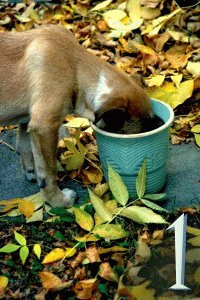
Keeping your animals inside helps prevent diseases and also protects them from mountain lions, but we understand this is not always possible.
And besides, isn’t part of the reason you are living away from the city is so you and your animals can have plenty of open space and not be cooped up all day?
While your pets are safer indoors (and we suggest you keep them inside whenever possible or if there has been a recent lion sighting), they are typically not at great risk from mountain lions in your yard during the day.
Lions are usually most active at night. You will increase your pets’ safety and keep them happy by simply bringing them indoors between dusk and dawn, as well as accompanying them on late night bathroom outings.
If having your animals sleep inside the house is not possible… for example you have large dogs, a herd of sheep, or a goat that just snores too loudly, then secure them for the night in a fully enclosed structure like a shed, barn, or one of MLF’s lion-proof small livestock enclosures. For larger ranching operations where this is not an option, please see Step 3 for tips on keeping free range animals safe from predators.
Step 2. Keep Mountain Lions Out of Your Yard
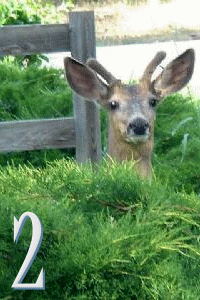
Just because there are lions in the area does not mean one is living in your backyard. A lion’s territory can easily encompass 20 square miles and they spend most of their time traveling throughout their territory.
Therefore, an easy way to keep lions away is to be sure you are not attracting their natural prey – deer – to your home or garden.
The California Department of Fish and Game’s A Gardener’s Guide to Preventing Deer Damage has tips on which plants to grow and which ones to remove. Brush in general is not only a fire hazard, but it can also provide comfortable hiding places for wild animals. So clear bushes from around your home… especially if they are the type deer like to eat, and install proper fencing to keep wildlife out and protect your garden.
Raccoons and feral cats are also common lion food, so do what you can to avoid attracting them. Store your pet food in a secure enclosure and whenever possible feed your animals indoors.
Garbage cans also provide a magnificent party buffet for wild animals and it may not be long before a lion decides to crash the party and eat the guests. Close the buffet by securing your garbage cans.
Step 3. Safeguard Livestock
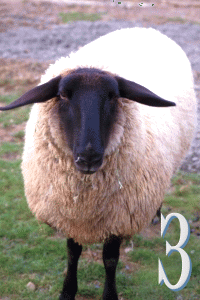
Raising livestock is often a messy business. Just like people can’t help themselves from buying that great-smelling popcorn at the movie theater, mountain lions may be tempted to come into your yard for a quick and tasty meal should they catch a whiff of one.
The smell of blood from sick, injured, dead, or newborn animals will attract mountain lions. Clean up the source and place vulnerable animals within a secure enclosure.
If the size of your ranching operation does not permit you to follow the previous steps, or if you have implemented them and are still having conflicts, consider researching and investing in some of these additional predator aversion techniques.
If a covered livestock pen is not an option, you may need to build a tall fence. Mountain lions have been known to jump 15 feet vertically. Trained livestock-specific guard dogs are also said to scare off mountain lions.
Timed or motion sensor alarms with flashing lights, loud noises and sprinklers may work on mountain lions, and can also provide an added bonus of scaring other pesky neighbors who show up uninvited.
Step 4. Now Spread the Word
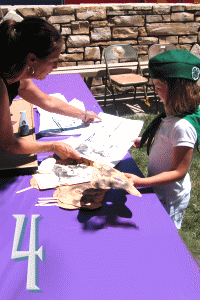
After following these simple steps, please let your neighbors know the value of taking the same precautions. A neighbor’s actions can still attract mountain lions into the area and increase everyone’s chances for a conflict.
Once people understand that it’s much easier — and far better — to change human behavior than the behavior of wildlife, they’ll usually come around.
Let your neighbors know that they can come to this website to learn about lions. While you may understand how to live peacefully with the local wildlife, your neighbors may not. Their appeal to a government agency may result in the death of a mountain lion.
Often neighbors call in the authorities thinking that they are simply making a report, and without understanding the likely consequences. Once a call is made, it’s often a death warrant for the wild animal.
Please think your actions all the way through and do what is best for your community. Here are a few options to consider:
-
-
- Refer people to our website for information or to report a mountain lion sighting.
- Print and distribute helpful tips and information.
- Invite your local 4H and FFA clubs to contact the Mountain Lion Foundation for help or tips for protecting their animals.
- If your community could use an outside voice to share information, request a Mountain Lion Foundation presenter.
-


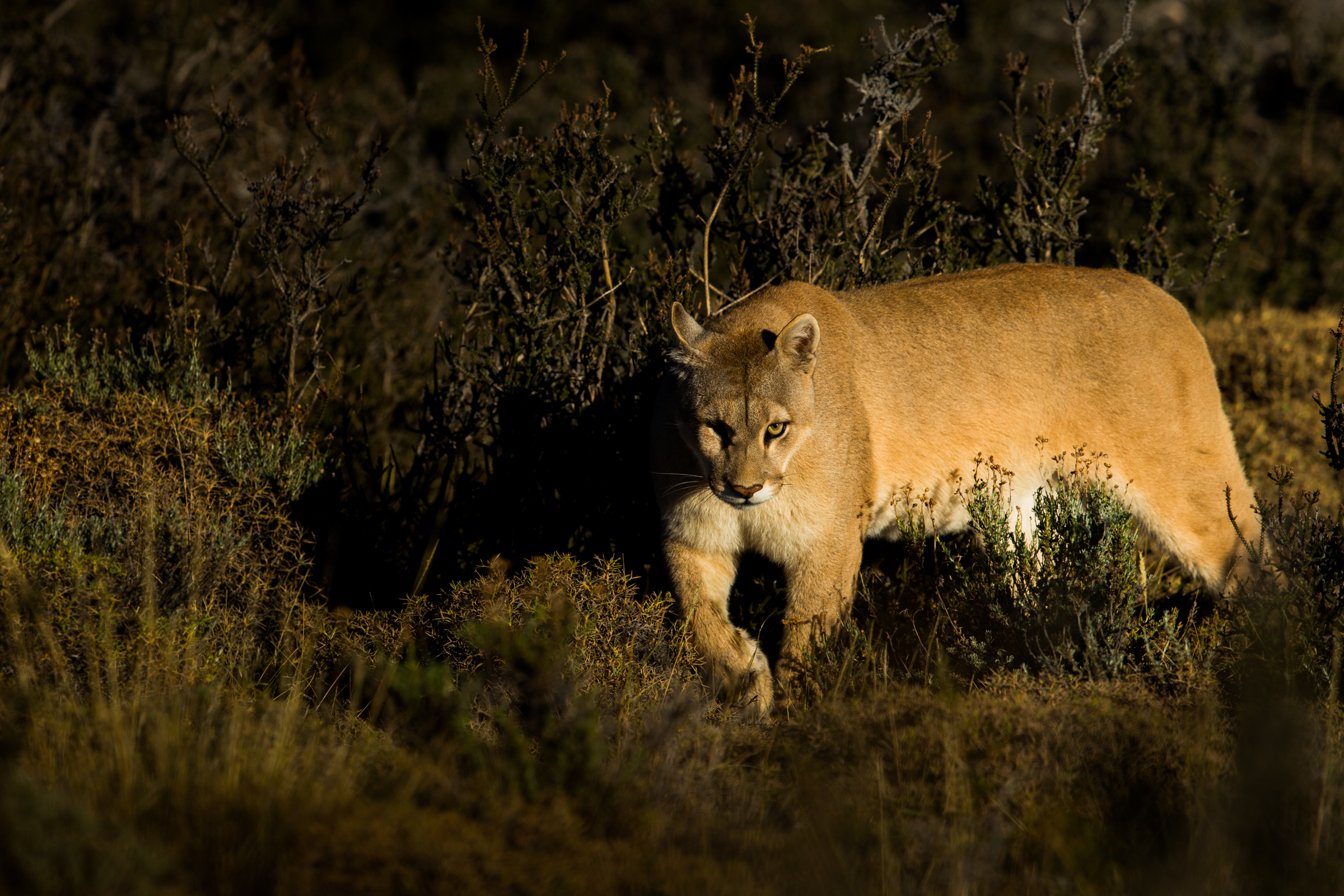
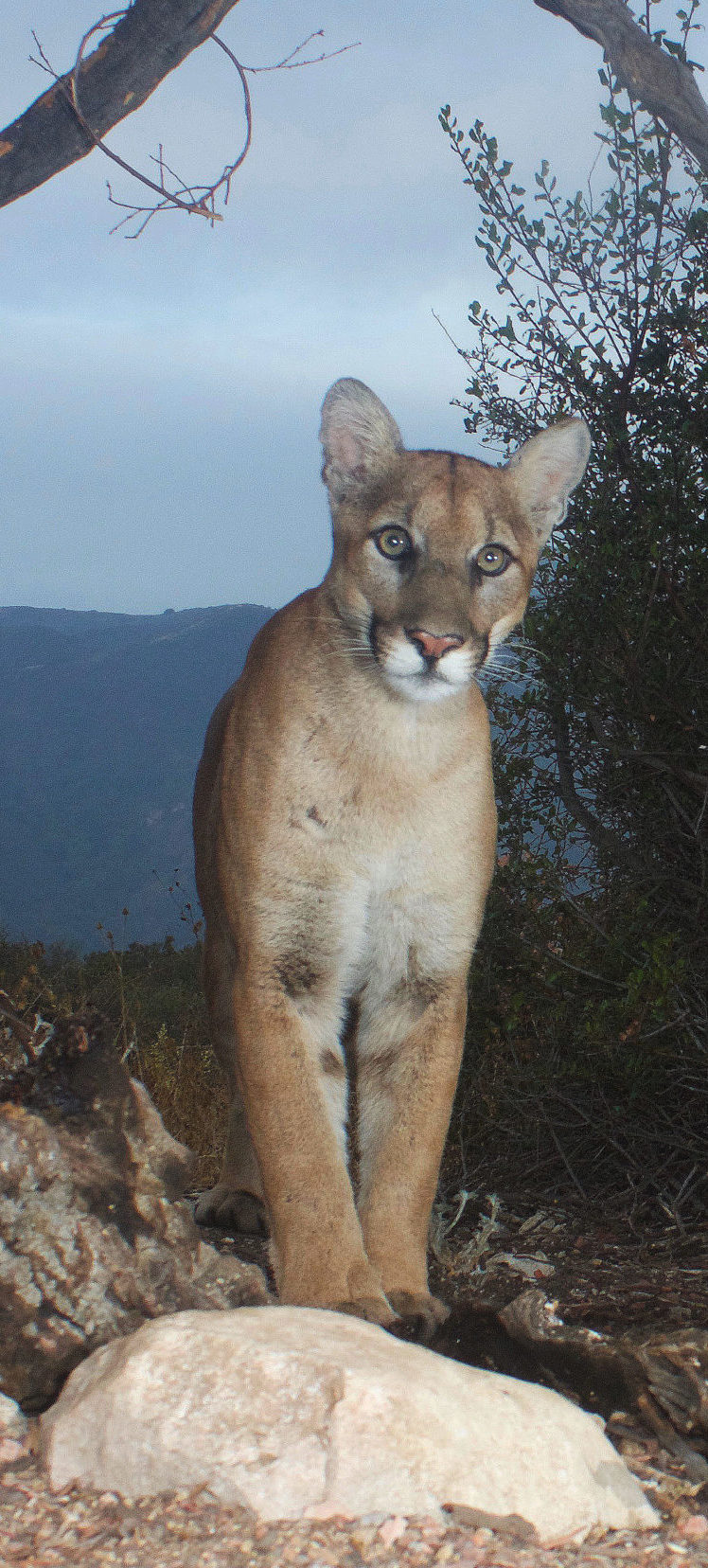






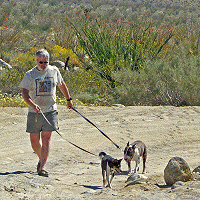 So a lion not backing down is often a sign that you already have the advantage.
So a lion not backing down is often a sign that you already have the advantage.
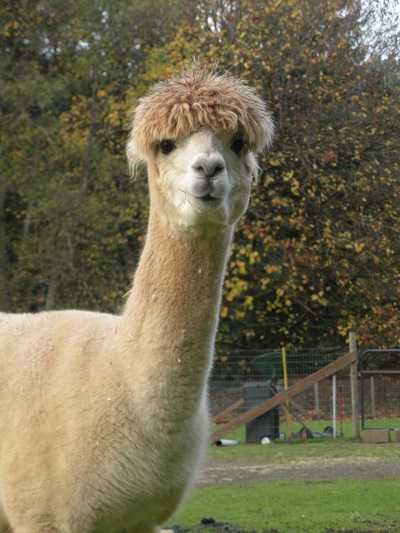
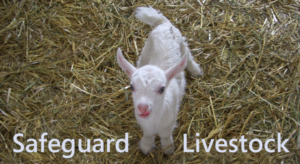
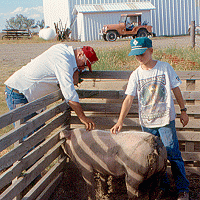 Rethink Your Animal Husbandry
Rethink Your Animal Husbandry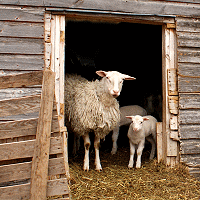 Pens, Barns and Enclosures
Pens, Barns and Enclosures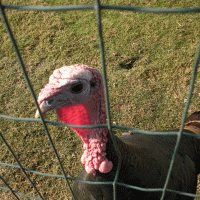 Fences
Fences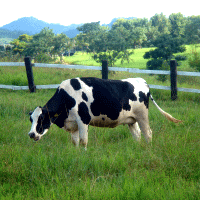 Take Advantage of Daylight
Take Advantage of Daylight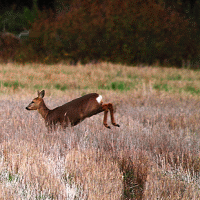 Keep Wildlife at a Distance
Keep Wildlife at a Distance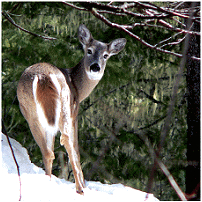 Think Seasonally
Think Seasonally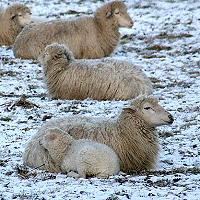 Fall Birthing
Fall Birthing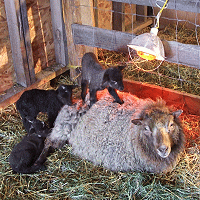 Shed Birthing
Shed Birthing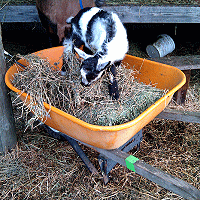 Keep Livestock Areas Clean
Keep Livestock Areas Clean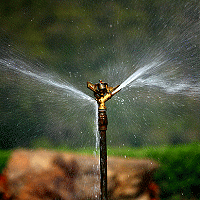 Install Frightening Devices
Install Frightening Devices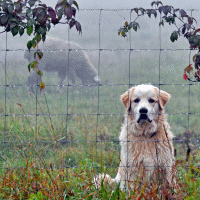 Employ Guard Animals
Employ Guard Animals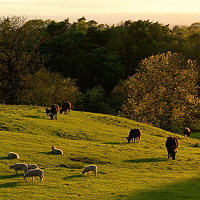 Multi-species Stocking
Multi-species Stocking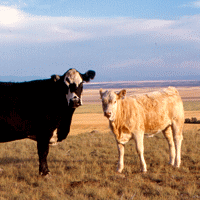 Selecting Appropriate Livestock
Selecting Appropriate Livestock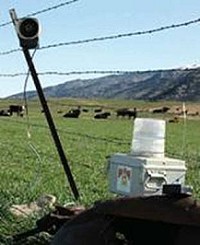 Timed Alarms
Timed Alarms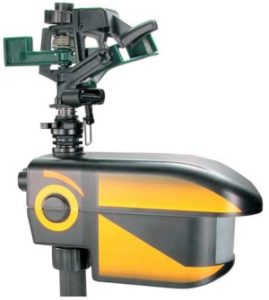 Motion Alarms
Motion Alarms
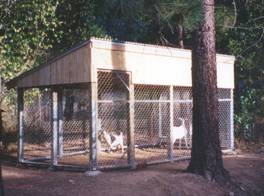
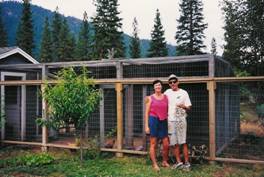
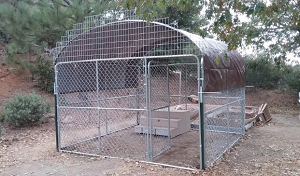 The Basics
The Basics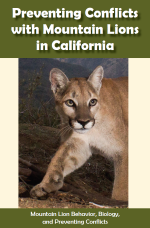 or reinforce any broken pieces. Board up any openings that wild animals can fit through. If there are too many openings between boards, consider reinforcing the walls with chain link. Make sure all windows are closable with glass or latched shutters, or board them up. Be sure to consider proper ventilation for the health of your animals, but be aware that predators can enter through large openings.
or reinforce any broken pieces. Board up any openings that wild animals can fit through. If there are too many openings between boards, consider reinforcing the walls with chain link. Make sure all windows are closable with glass or latched shutters, or board them up. Be sure to consider proper ventilation for the health of your animals, but be aware that predators can enter through large openings.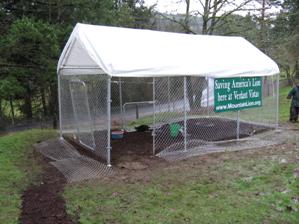
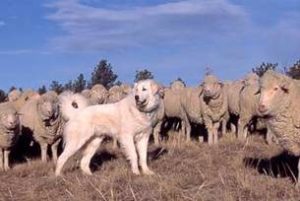 Guard Animals
Guard Animals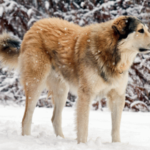 The Akbash is one of several guard breeds of Turkey, originating in the west central region near Ankara. It is white in color. It is believed to be less aggressive towards people than some other guard breeds, but still very aggressive toward wild predators and other dogs. There are more than 2000 Akbash dogs in the United States, and one of the three breeds the USDA most recommends as guard dogs.
The Akbash is one of several guard breeds of Turkey, originating in the west central region near Ankara. It is white in color. It is believed to be less aggressive towards people than some other guard breeds, but still very aggressive toward wild predators and other dogs. There are more than 2000 Akbash dogs in the United States, and one of the three breeds the USDA most recommends as guard dogs.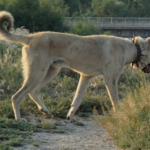 The Kangal, known as the national dog of Turkey, is tan in color with a distinctive black mask. It originates from the Sivas-Kangal region of the country. The Kangal became known in the United States in the 1980s, and has a large frame, powerful chest, pendant ears and short blunt muzzle: characteristics of early mastiffs. It is often called an Anatolian Shepherd, which is more accurately a term for any of the dogs from Turkey, and the name can be confusing.
The Kangal, known as the national dog of Turkey, is tan in color with a distinctive black mask. It originates from the Sivas-Kangal region of the country. The Kangal became known in the United States in the 1980s, and has a large frame, powerful chest, pendant ears and short blunt muzzle: characteristics of early mastiffs. It is often called an Anatolian Shepherd, which is more accurately a term for any of the dogs from Turkey, and the name can be confusing.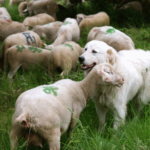 The Great Pyrenees were originally bred as dogs of war, and then used during times of peace to guard sheep and goats. They are less aggressive towards people than some of the other dogs used as guardians.
The Great Pyrenees were originally bred as dogs of war, and then used during times of peace to guard sheep and goats. They are less aggressive towards people than some of the other dogs used as guardians.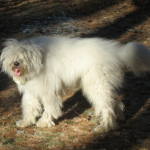 The Komondor originated in Hungary, and is another large, white-colored breed, distinguished by its long and heavily corded coat. Hungarian records as far back as 1544 mention the breed, which has been declared one of Hungary’s national treasures.
The Komondor originated in Hungary, and is another large, white-colored breed, distinguished by its long and heavily corded coat. Hungarian records as far back as 1544 mention the breed, which has been declared one of Hungary’s national treasures.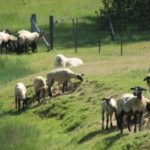 brings), so they sell lambs for meat. Their daughter raises goats on adjoining property. They sell their hormone-free products seasonally at local farmers markets under the label Haehl Creek Ranches.
brings), so they sell lambs for meat. Their daughter raises goats on adjoining property. They sell their hormone-free products seasonally at local farmers markets under the label Haehl Creek Ranches.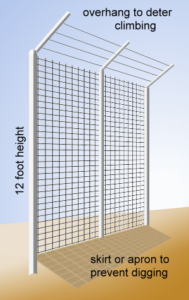 Fence Detail and Design
Fence Detail and Design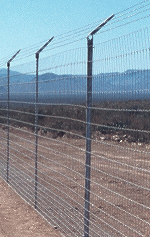
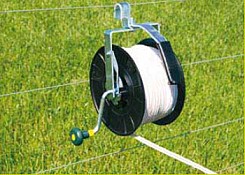 Because the fencing is a psychological barrier, it must be visible. White wires are more visible than any other color against most dry or lush grassland backgrounds. Mountain lions do not see color as well as high contrast, so white wiring will be more effective than red, orange or yellow.
Because the fencing is a psychological barrier, it must be visible. White wires are more visible than any other color against most dry or lush grassland backgrounds. Mountain lions do not see color as well as high contrast, so white wiring will be more effective than red, orange or yellow.